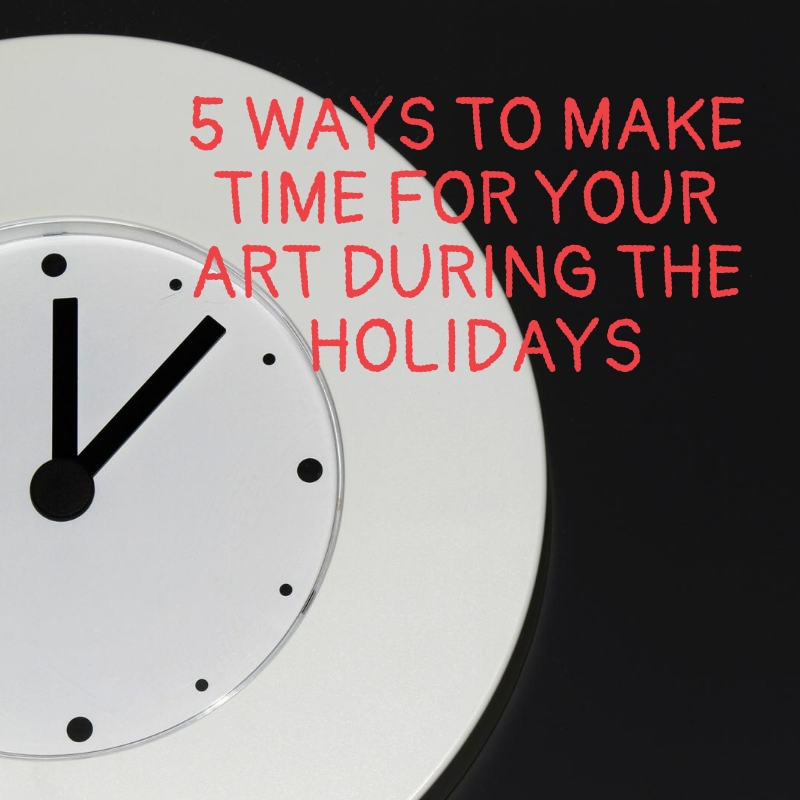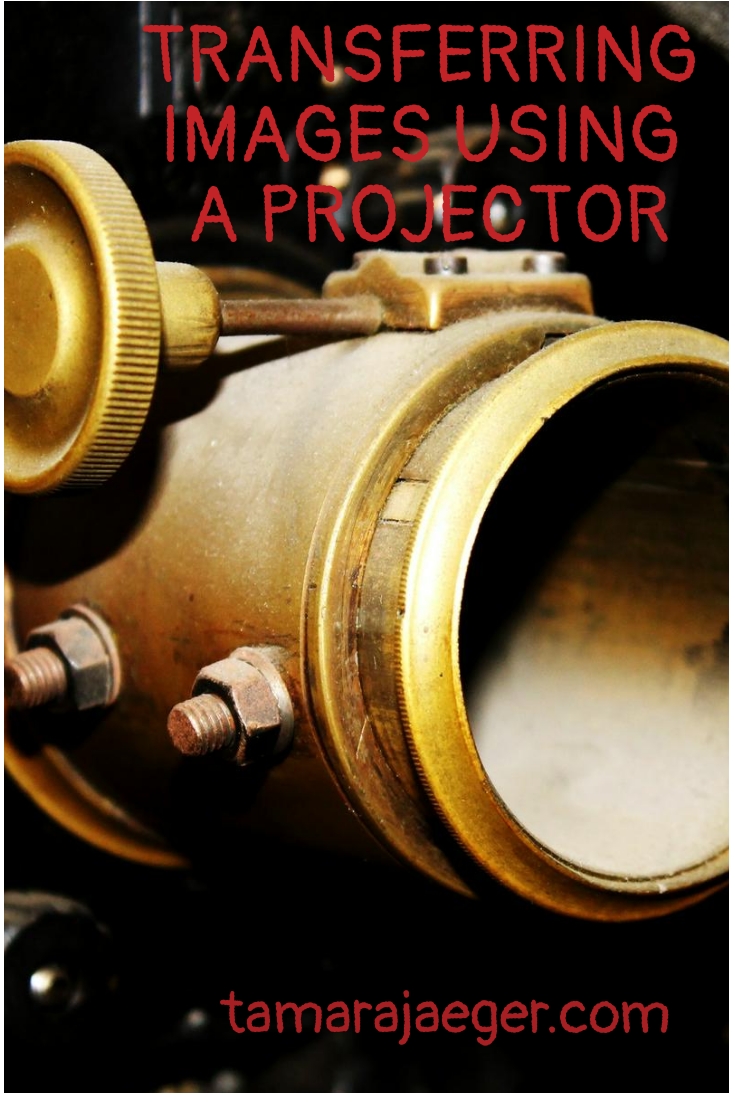Posts Tagged: art tips


5 Ways to Make Time for Your Art During the Holidays
With the holidays right around the corner, everything seems to go into overdrive this time of year. Unfortunately, when schedules fill up, it often seems like there’s no time for creating art. While it’s undoubtedly important—one could say necessary, even—time for creating artwork can get pushed aside by obligations to others. I’m guilty of this, and I’m sure many of you are as well. So, how can you make time for art amid the chaos and obligations of the season?
1. Schedule it
One way of making time for art is simply to schedule it. Block off that time and guard it vigilantly.
2. Keep a sketchbook with you
Okay, I get it. Not everyone can manage to block off a specific time slot. Everyone’s situation is different, and that’s okay. There are other options. You can also fit your art into whatever time you do have available. There’s nothing that says you need to devote a half hour, an hour, or even longer at a stretch. But what about that 5 or 10 minutes while you’re wait for something to cook, or for a meeting to begin or an appointment? Keep a sketchbook with you. That way when you have those 5 or 10 minutes, you’re prepared. There’s nothing to stop you from making your art!

3. Start an art journal
What if a sketchbook isn’t your thing? That’s fine too. I personally am not much of a sketcher. I do have a sketchbook, but it’s used more for recording rough, note-like sketches of ideas than for producing “good” artwork.

But why not try art journaling? Get yourself a sketchbook, or a notebook, or even just a stack of paper, and some art materials and start a journal. It can take as little as
5 or 10 minutes a day; there’s no reason you need to spend hours.
Got a few minutes first thing in the morning when you’re preparing for your day? How about a few minutes to reflect on your day as you get ready for bed? Jot down your thoughts and feelings. Find some inspiring quotes. Add whatever images you want, however you want. It’s all up to you. Journaling is a good way to relax, reduce stress, and sort out your thoughts and feelings.
4. Join (or create) an online art challenge
What if you need a little more inspiration or structure? How about an art challenge? There are a number that can be found online that you can join or you can even create your own. An art challenge not only provides guidance and structure, with a set topic for each day, but can also provide a sense of accountability that can help in prioritizing and scheduling your time. This is much like having a workout partner for the gym–if you’re expected to actually show someone something (such as posting it on social media), it’s easier to fit it in to your schedule.
A quick Google search should bring up a listing of art challenges. I’ve included a couple links that I found below:
www.deviantart.com/alwaysforeverhailey/journal/Art-Challenges-Mega-List-638643796
www.kickinthecreatives.com/all-creative-challenges/
5. Play with your food
Another option is to fit your art and creativity into your normal, everyday tasks. If you’re preparing food for a party, why not get a little creative? There’s no need for that veggie tray to be boring! I have a friend who makes breakfast for his daughters every Saturday and he comes up with the most creative presentations! I’ve seen him come up with apple swans, turkeys made from pears with bacon ‘tails,’ and flowers out of every imaginable breakfast food. Sometimes all you need is to squeeze a tiny little bit art into your everyday routine.

What ways have you found to fit art into your busy schedule?


Transferring Images Using a Projector
I’ve recently been experimenting with ways to speed up my process when making my torn paper collages. Let’s face it—gluing down hundreds or thousands of tiny, hand-torn paper fragments takes a lot of time. Unfortunately, there’s no way around that. The only place I can see to speed things up a bit is in the prep work. Namely, the underdrawing.
The initial drawing for the piece is critical. If it’s not quite right, it’s nearly impossible to get the final piece to look good. This is particularly important for things like pet portraits, where the subject is specific and recognizable. Sketching out the subject, then erasing and tweaking until it’s finally just right can take a lot of time. There are a number of ways to make sure the angles and proportions are correct, but it all takes time. So one day I thought “What about one of those art projector things?” I work mostly from photo references, so if I could project the image onto the paper and essentially trace it, that would certainly speed things up!

Artograph Flare 150 projector
Now, some of you are probably thinking “but that’s cheating!” And that’s certainly one way of looking at it. On the other hand, regardless of how the underdrawing got there, the difficult part of the work is in selecting, shaping and layering the magazine fragments to create an image that contains the needed range of values, highlights and shadows.
So I decided to try one out. First, I looked at the actual
art projectors. Those are nice, but expensive. I couldn’t justify the cost for something I was just experimenting with, though I might consider splurging on one in the future. I ended up getting a regular home movie projector. There are a ton to choose from online and they can be Much cheaper than the ones created specifically for artwork. Granted, the art projectors are probably better overall, since the movie projectors have a somewhat limited working distance (I don’t typically need to blow up my images to “wall size”!) and the resolution for working up close is somewhat poor. But I also really only need a rough sketch of the shape and major features, not a photo-like reproduction of the image, so the poorer resolution isn’t really much of a problem.

Home movie projector
I typically prop the projector up on a stack of boxes, pointed at a wall that has a bookshelf that I can place my paper pad against. The limited focusing range of the projector means that much of the adjustment in size and focus must be done by moving the projector itself backward and forward to get the image the way I want it. There’s definitely a limit on how small you can make the image—it simply won’t focus if the projector is too close to the wall. Enlarging images onto large canvases, large paper sizes, or for wall murals would be a better use of this technique than attempting to transfer small images. I suspect the art projectors would provide a better focusing distance and resolution for smaller image transfers.
Depending on the quality of the projector, the room can need to be fairly dark to see the image well. For the one I have, I find that turning off the lights in the room is sufficient if I’m working at night. I haven’t tried to use the projector during the daytime. While my projector allows a laptop to be connected directly, I usually transfer the images onto a USB stick and use that, since it allows me more leeway for moving the projector around. Another issue I’ve found is that the projector runs single images in a slide show mode, which causes it to flip between images or to re-project a single image after a short amount of time. The way I’ve gotten around this is by placing each image into its own folder, so the projector won’t switch between multiple images on the flash drive and by pressing the ‘pause’ button after the ‘run’ button, so it holds the image steady instead of repeatedly refreshing the image. This allows me to load several images onto the flash drive so I can prep for multiple pieces in one session, instead of having to set the project up each time I want to sketch out a new piece.
I’m still not sure I’m totally happy with this method of image transfer. It definitely would work better for enlarging images than for transferring small images. However, it Does speed things up considerably and gives acceptable quality and performance for the price. I might have to splurge on one of the more expensive art projectors at some point, to see if those work better. And hey, if I ever unexpectedly need to show a movie to a group of people, I’m all set!
*Please note that this post contains affiliate links and any sales made through such links will reward me a small commission – at no extra cost for you.